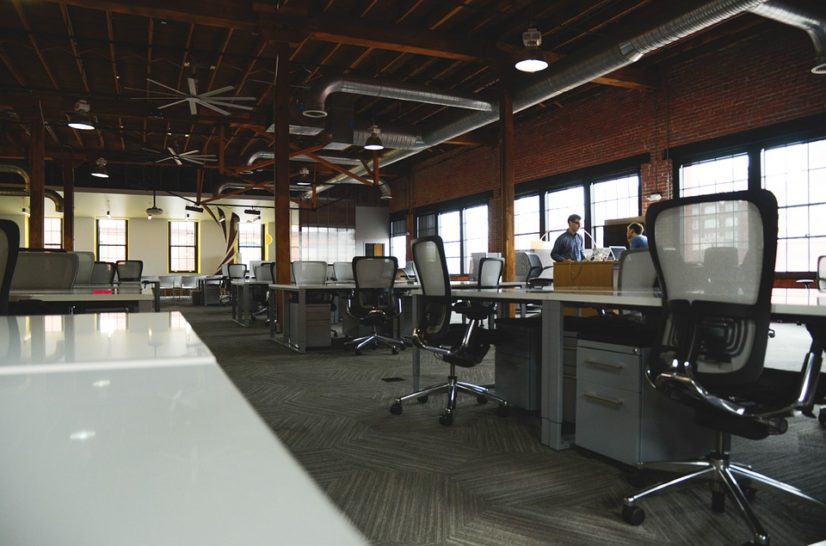In an office setting, employees may say they want a quiet environment that allows them to concentrate, but what they really want is to eliminate any audible distractions. Bad acoustics in an open office or similar workplace can result in a lack of privacy, lower productivity, employee discomfort, lower work quality and a reduced ability to communicate.
Addressing unwanted noise in the workplace is usually focused on eliminating sound with acoustic panels, sound baffling and partitions. But rather than eliminating noise with the addition of materials and structures, a sound masking system for offices makes a workplace seem quieter by actually adding noise. This counterintuitive approach eliminates distracting conversations by the generation of noise that is targeted to make indirect speech less intelligible.
This might sound like a foreign concept, but you've likely experienced the phenomenon behind how to mask sound in an office. If you have ever washed dishes and tried to have a conversation with someone in the next room, you know the sound of running and splashing water makes it difficult to maintain that conversation.
What is Sound Masking in Offices?
With open office sound masking, people are more able to stay focused on the task in front of them, as the conversations of other people are made intelligible and therefore less distracting. Sound masking in private office settings can be an effective way to increase confidentiality and even maintain compliance with privacy laws.
A sound masking system for offices sounds similar to a running HVAC system. Specifically calibrated frequencies produced by the system are designed to match the frequencies of human speech. A sound masking system does not completely cancel out all speech sounds in an environment, but it does reduce the “radius of distraction” — or how close a conversation must be in order to be distracting.
Sound masking for office space elevates the level of ambient sound to achieve an ideal signal-to-noise ratio. The sound masking system itself should not be distracting. In fact, most systems are designed to provide comfort, similar to the way in which a white noise machine can be soothing.
Incidentally, it can be easy to confuse sound masking with white noise. However, white noise is designed to draw attention. When a sound masking system is functioning optimally, it blocks out speech and the noise generated only exists in the background.
Improving Boosting Productivity, Ensuring Privacy and Supporting Compliance
Sound masking is most often used for boosting either productivity or privacy, and the reason for its use dictates how a system is deployed.
When sound masking is used to enhance productivity, speakers are positioned evenly throughout the workplace. This has the effect of dampening distracting sounds from across the office space.
When used to enhance privacy, speakers are positioned around offices, conference rooms and other places where sensitive matters are being discussed. This helps to keep sensitive conversations contained within designated areas.
Maintaining privacy is especially important in healthcare settings. According to the Health Insurance Portability Accountability Act — also known as HIPPA — healthcare professionals must take all reasonable measures to protect the confidentiality of patients. Discussing sensitive matters comes with being a healthcare professional, and many people in health care naturally become desensitized to talking about sensitive topics with their patients. Considering the human voice can travel through walls, this makes for a delicate compliance situation.
A sound masking system in private office settings can ensure that provider-patient conversations are kept confidential.
Considerations for Sound Masking in Offices
Every workplace has different acoustics, and a sound masking system should be tailored accordingly. Open office sound masking is therefore a much different proposition than sound masking in private office settings.
Size of the workplace is one of the main considerations, with large open offices being more challenging than a small office space filled with cubicles. The types of surfaces within a workplace are another consideration. For example, an open office with lots of glass and metal surfaces is better at propagating noise than in carpeted office space filled with soft surfaces. Other considerations include:
- Type of ceiling. An open or closed ceiling will dictate whether the system uses a direct or indirect approach to sound masking.
- Ceiling height. Low ceilings and very high ceilings offer their own sets of acoustic challenges.
- Ceiling materials. A sound masking system is often placed above a drop ceiling and ceiling materials can have a major influence. For example, a ceiling made of perforated metal can have acoustic qualities similar to that of an open ceiling, while a ceiling of plasterboard or gypsum can be difficult for a system to penetrate.
- Location. Most installers treat each “zone” of an overall sound masking system as a distinct acoustic environment. This allows for the control of sound masking levels, so the masking sound matches the requirements of each space.
How Taylored Systems Can Help
At Taylored Systems, we offer a full line of sound masking solutions. The same speakers we supply for sound masking purposes can also double as speakers for an interoffice paging system, increasing the return on system investment. Please contact us to learn more about our sound masking solutions and the best sound masking machine for office spaces in your facilities.

